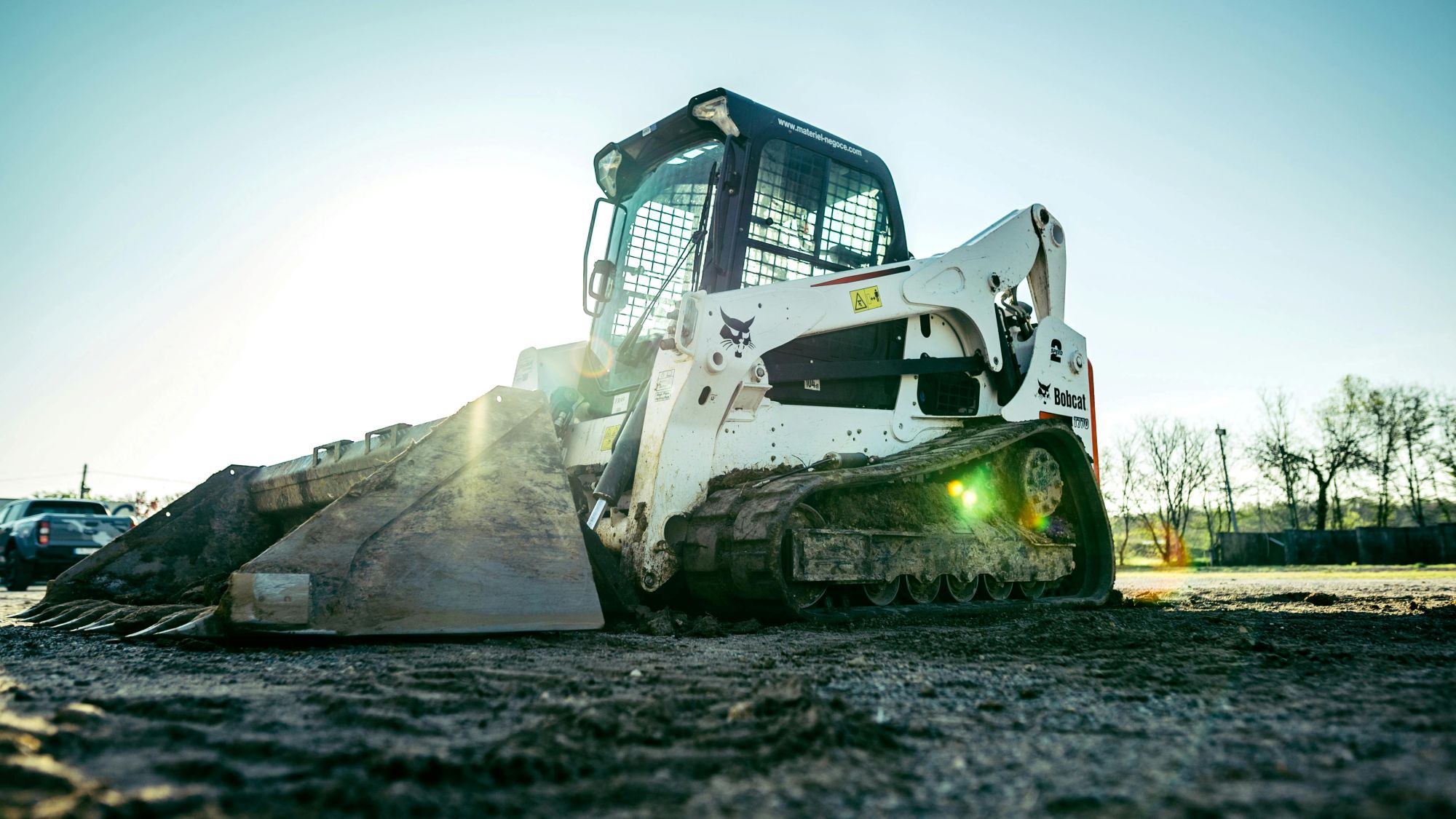
For those wishing to go into the construction, landscaping, or earthmoving sectors, starting a skid steer business may be a very fulfilling and lucrative endeavor. Compact and strong, skid steers are renowned for their adaptability and agility. Grading, excavation, waste removal, trenching, snow plowing, and material carrying are just a few of the many jobs they can do. Skid steers are in great demand across a number of industries because to their versatility and the large range of attachments that are available.
The very low barrier to entry in comparison to other heavy machinery enterprises is one of the most alluring features of starting a skid steer business. Compared to larger equipment like excavators or bulldozers, buying or financing a skid steer usually requires less money, making it affordable for new business owners or contractors looking to increase their operations. According to Equipment World, more than 9,900 new skid steers were financed between March 2024 and February 2025, showing how strong demand remains for financed compact equipment. Due to the strong market demand and reduced initial investment, businesses can begin making money quickly—often with just one machine and a few dependable attachments.

A skid steer business offers scalability and expansion potential in addition to affordability and demand. You can recruit more workers, buy more equipment, or expand your offerings to include seasonal labor like land clearing in the spring or snow removal in the winter as your clientele grows. A consistent flow of work throughout the year can be ensured by forming strategic alliances with real estate developers, landscapers, and construction companies. Additionally, you can obtain the working capital or equipment financing required to grow with assurance and sustainability—without compromising cash flow or taking needless risks with the help of lenders like TrueCore Capital.
Here’s a step-by-step guide to help you launch a successful skid steer business from the ground up.
1. Research Your Market and Services
Before purchasing equipment or creating a business plan, research the demand for skid steer services in your area. Common services include:
Identify the most in-demand services locally and determine what types of clients you’ll serve—residential, commercial, construction, or municipalities.
2. Create a Business Plan
When starting a skid steer business, drafting a thorough business plan is an essential first step. It acts as a road map that details your objectives, your strategy for achieving them, and the resources you’ll require. In addition to keeping you focused and organized, a well-written business plan is necessary if you intend to apply for loans from lenders such as Truecore Capital, which focuses on working capital and equipment finance for small business owners.
Begin by creating a startup cost breakdown that includes all of the upfront costs you will have to pay. This covers the cost of buying or financing your skid steer, any necessary trailers and trucks, as well as any attachments, fuel, insurance, licenses, marketing materials, and administrative expenses like office supplies and software. Be thorough and practical; if you’re not ready, unforeseen costs could ruin your launch.
Determine your target market next. Who are your ideal clients? Are they municipalities, residential homeowners, landscapers, building companies, or real estate developers? Determine their location, the services they require most, and how your company may outperform the competitors in meeting those demands.
Describe the services you will provide, such as hauling, grading, trenching, snow removal, and land clearing. Enumerate any seasonal services you might offer along with the equipment or accessories needed for each service. Next, develop a price strategy based on profit margins, local market rates, and your service expenses. Incorporate both flat-rate and hourly alternatives and think about whether to provide packages or special savings to loyal clients.
Create a well-defined marketing plan to advertise your company. This should involve both offline and online initiatives, like creating a website, using social media, running local ads, and connecting with contractors. Describe how you plan to connect with prospective clients and turn their queries into lucrative jobs.
Lastly, provide financial forecasts. For at least the first 12 to 24 months, project your income, costs, and profit margins. Provide a cash flow statement and a break-even analysis. If you’re looking for funding, this section of your business plan is crucial since lenders like TrueCore Capital will want to see that your company has a practical plan for making money and paying back debts. You may get the money you need to buy equipment, pay for operating expenses, or grow your company without needless delays or worry thanks to their flexible financing options.

In addition to improving your chances of long-term success, having this well-organized plan in place makes you appear to clients and financing partners like a serious, trustworthy businessperson.
3. Purchase the Right Equipment
Your skid steer is the backbone of your operation. Choose a reliable model that fits the types of jobs you plan to take on. Consider factors like:
In many cases, financing your equipment through a reputable lender can free up cash flow and allow you to invest in necessary attachments.
4. Register Your Business and Get Insured
Registering your company name, which will serve as your official brand, should occur first. To ensure that potential clients know what you offer right away, use a name that is professional, easy to remember, and contains terms like “skid steer,” “excavation,” or “land services.” To make sure the name is available and not already in use, visit the Secretary of State’s website in your state.
Select a legal form for your company after securing your name. Establishing a Limited Liability Company (LLC) is a wise decision for the majority of skid steer operators. It provides tax flexibility, is rather easy to set up, and safeguards your personal assets in the event that your company is sued or has financial difficulties. Depending on your objectives and whether you want to have partners or workers, you may also want to look at structures like sole proprietorship or S-corporation. For tax and payroll purposes, you can register your company organization with the state and get an Employer Identification Number (EIN) from the IRS online for free.
After that, make sure you acquire all the licenses and permits needed to conduct business lawfully in your state, county, and city. Depending on your local laws, these could include a general business license, a contractor’s license, or particular licenses for transporting, grading, or excavation. For a list of requirements in your area, get in touch with the county clerk or small business office in your community. Operating without the required license may result in penalties or closures.
Getting insurance is equally vital. Commercial general liability insurance is required at the very least to cover injuries or property damage sustained on the job. To safeguard your skid steer and its attachments in the event of theft, fire, or accident, you need also have equipment insurance, particularly if you are financing the purchase. You will also require workers’ compensation insurance if you hire staff. Having the right insurance not only protects your company but also increases your chances of getting new business because clients and contractors may ask to see proof of insurance before hiring you.
By taking care of these fundamental legal and insurance procedures up front, you position yourself for long-term success and enable you to function with assurance right away.
5. Market Your Services
Establishing reputation and drawing in customers in the skid steer industry require a robust, expert web presence. Create a simple, mobile-friendly website that lists your services, service area, estimated costs, and contact details first. Provide a brief bio about your background and goals, as well as excellent pictures of your tools and finished projects. To make it simple for potential clients to get in touch with you, make sure your website also has a booking option or contact form.

Create a Google Business Profile after that. This enables your company to show up on Google Maps and in local search results, which is essential for location-based services. Make care to complete each form, including adding your service areas, business hours, a service description, and images. Additionally, this profile serves as a hub for client reviews, which enhances your reputation and makes your company stand out.
Showcase your work on social media sites like Facebook and Instagram in addition to your website and Google listing. Post before-and-after pictures, job time-lapse films, equipment operation behind-the-scenes footage, and even client endorsements. For local job or service listings, Craigslist and Facebook Marketplace can also be useful, especially in the beginning. These platforms are very visible to your target demographic and are free.
Don’t underestimate the power of offline marketing as well. Print professional business cards and hand them out at job sites, hardware stores, construction supply retailers, and local networking events. Forge relationships with contractors, landscapers, real estate developers, and property managers—they’re often looking for reliable subcontractors. Also, consider advertising in local home improvement magazines, trade directories, or community bulletins, which can drive long-term awareness in your region.
Lastly, always request a review and referral after finishing a job or contract. Thanking the consumer and asking for feedback in a brief follow-up communication can make a big difference. In addition to increasing your Google exposure, online reviews help you gain the trust of potential customers. One of the most effective marketing strategies is still word-of-mouth, and each happy customer presents a chance to expand your clientele and reputation.
6. Manage Your Finances Wisely
Track your income, expenses, and maintenance costs carefully. Use accounting software or hire a bookkeeper. Ensure you’re charging enough to cover wear and tear on your machine, fuel, insurance, and your own labor. This is also where having working capital from partners like TrueCore Capital can make a big difference—providing financial flexibility during slow months or when expanding operations.
If you have the proper preparation, tools, and perseverance, running a skid steer business may be immensely fulfilling. Prioritize providing high-quality service, keeping your machine in good working order, and cultivating enduring connections within your community. You can quickly go from being a single machine operator to a full-service contractor with the correct finance partners and commitment.
Being professional and consistent will help you stand out from the competitors. No matter how big or little the assignment is, always arrive on time, communicate with clients properly, and take pleasure in your work. A reputation for dependability and quality will eventually bring you repeat business and recommendations, which are the foundation of every service-based company.
As your company grows, think about offering new services or hiring more staff and equipment. Adding services like seasonal snow removal, mini excavators, or dump trailers will help you diversify your business and maintain consistent revenue throughout the year. Additionally, scaling your business becomes a strategic investment in your future rather than a financial burden when you receive finance support from firms like TrueCore Capital.
Ready to get started? Give us a call at (805) 422-7342 or submit a quick contact form below and one of our specialists will reach out to you shortly.